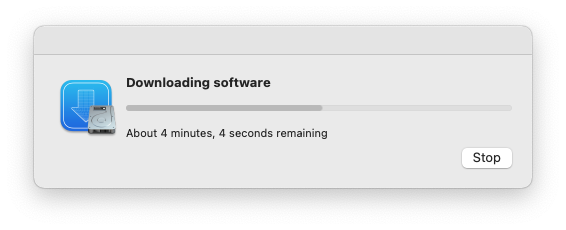

Help that describes the purpose of the entry. To get the dependencies of your favorite interface.įor each menu entry in the configuration tool, you can find associated Refer to Chapter 2, System requirements for more details, "development" packages for relevant libraries used by theĬonfiguration utilities.
#Tarball git for mac install#
Utility (including the interface), so you may need to install The first step when using Buildroot is to create a configuration.īuildroot has a nice configuration tool similar to the one you canįrom the buildroot directory, run $ make menuconfigįor the original curses-based configurator, or $ make nconfigįor the new curses-based configurator, or $ make xconfigįor the Qt-based configurator, or $ make gconfigĪll of these "make" commands will need to build a configuration By running allĬommands as a regular user, you protect your system against packagesīehaving badly during compilation and installation. Is no need to be root to configure and use Buildroot. Important: you can and should build everything as a normal user. Besides this, a number of third-party projects are based on, Processors, MIPS processors, ARM processors, etc.īuildroot supports numerous processors and their variants it alsoĬomes with default configurations for several boards available Processors everyone is used to having in his PC. Buildroot can be used for anyĬombination of these options, independently (you can for example useĪn existing cross-compilation toolchain, and build only your rootīuildroot is useful mainly for people working with embedded systems.Įmbedded systems often use processors that are not the regular x86 In order to achieve this, Buildroot is able to generate aĬross-compilation toolchain, a root filesystem, a Linux kernel imageĪnd a bootloader for your target. Migrating to 2017.08īuildroot is a tool that simplifies and automates the process ofīuilding a complete Linux system for an embedded system, using Migrating from older Buildroot versions 27.1. Reporting issues/bugs or getting help 22.7. Analyzing and fixing autobuild failures 22.3. Reproducing, analyzing and fixing bugs 22.2. Format and licensing of the package patches 19.4. Gettext integration and interaction with packages 18.25. Hooks available in the various build steps 18.24. Infrastructure specific to the Linux kernel package 18.23. Infrastructure for asciidoc documents 18.22. Infrastructure for packages building kernel modules 18.21. Infrastructure for QMake-based packages 18.20. Infrastructure for Cargo-based packages 18.18. Infrastructure for Meson-based packages 18.17. Infrastructure for Waf-based packages 18.16. Infrastructure for rebar-based packages 18.15. Infrastructure for packages using kconfig for configuration files 18.14. Infrastructure for virtual packages 18.13. Infrastructure for Perl/CPAN packages 18.12. Infrastructure for LuaRocks-based packages 18.11. Infrastructure for Python packages 18.10. Infrastructure for CMake-based packages 18.9. Infrastructure for autotools-based packages 18.8. Infrastructure for packages with specific build systems 18.7. Adding support for a particular board 18. Complying with open source licenses 13.2. Why doesn’t Buildroot generate binary packages (.deb. Why not use the target directory as a chroot directory? 11.7. Why are some packages not visible in the Buildroot config menu? 11.6. Why is there no documentation on the target? 11.5. Why are there no development files on the target? 11.4. Why is there no compiler on the target? 11.3. The boot hangs after Starting network… 11.2. Frequently Asked Questions & Troubleshooting 11.1.

Quick guide to storing your project-specific customizations 10. Customization after the images have been created 9.8. Customizing the generated target filesystem 9.6. Storing the configuration of other components 9.5. Keeping customizations outside of Buildroot 9.3. Graphing the filesystem size contribution of packages 8.12. Graphing the dependencies between packages 8.10. Dealing efficiently with filesystem images 8.8.
#Tarball git for mac how to#
Understanding how to rebuild packages 8.4.
#Tarball git for mac full#
Understanding when a full rebuild is necessary 8.3.


 0 kommentar(er)
0 kommentar(er)
